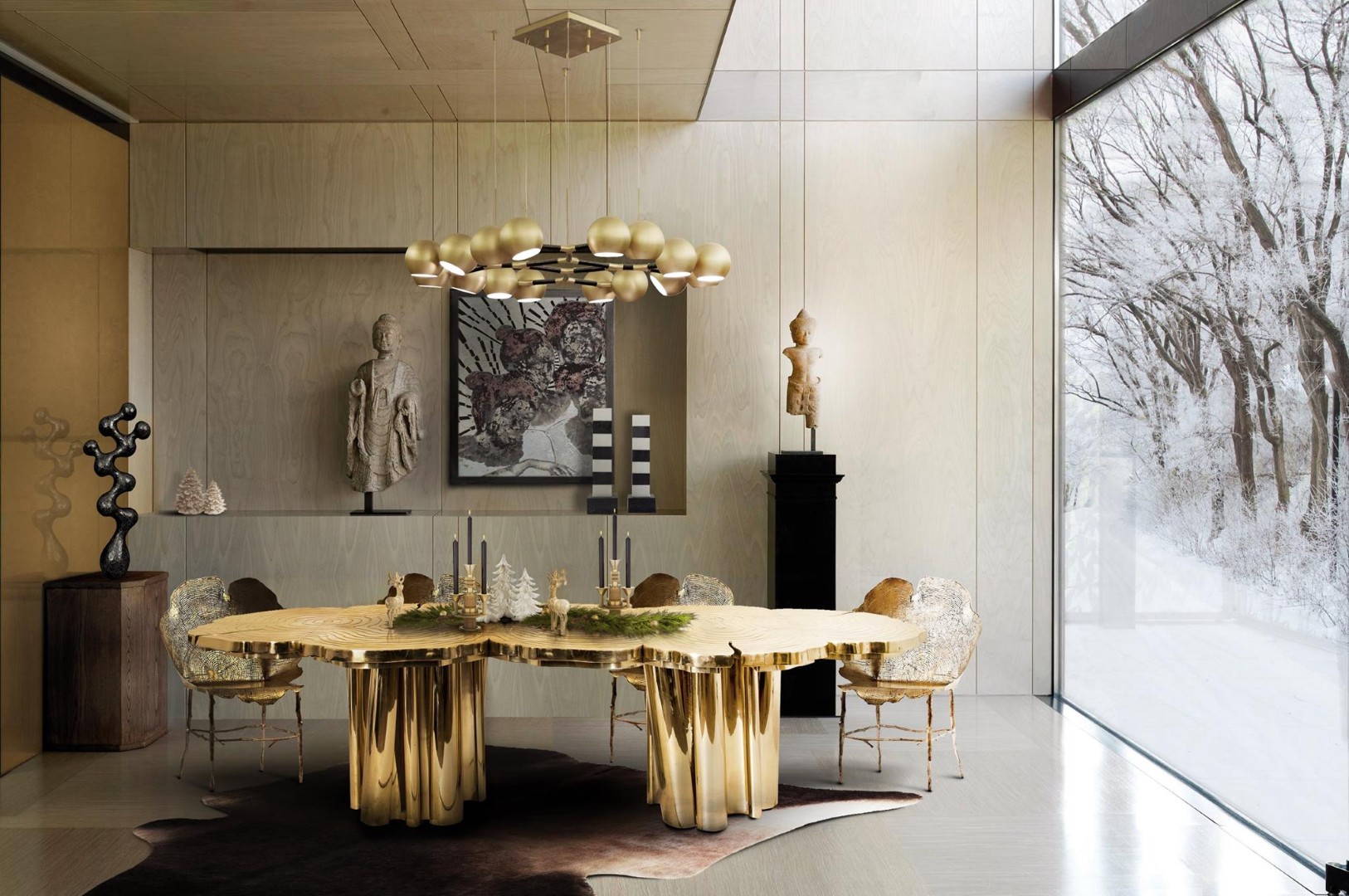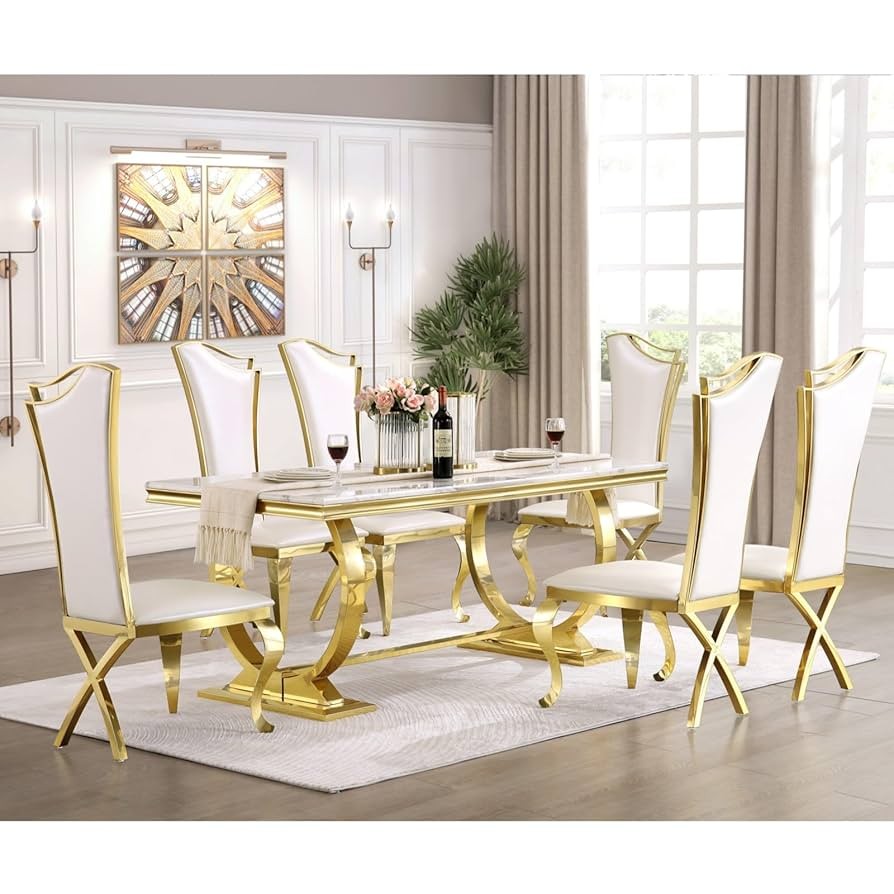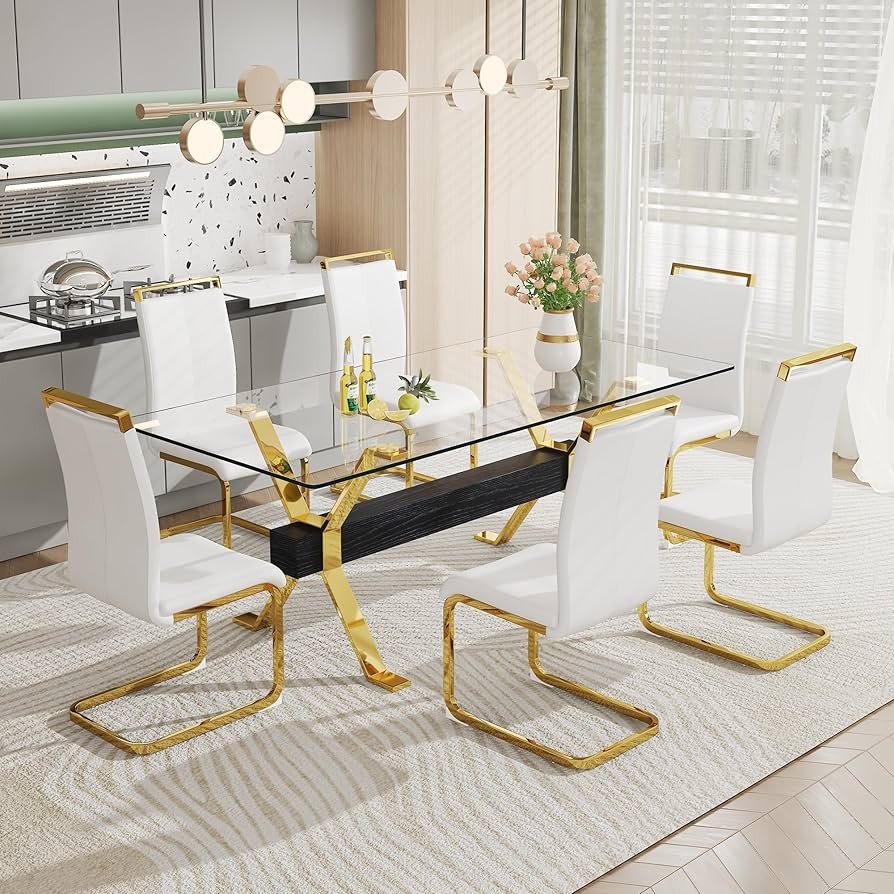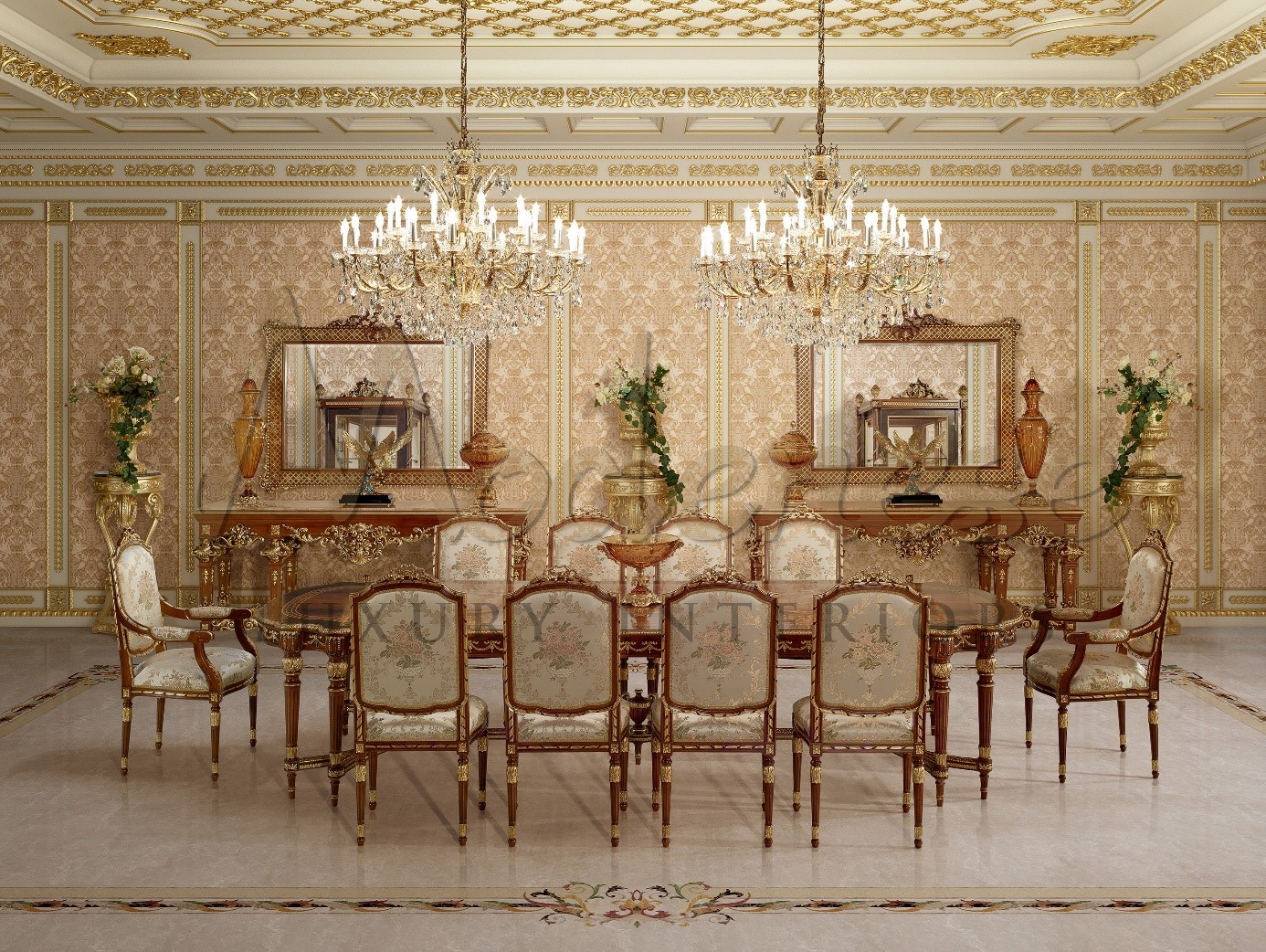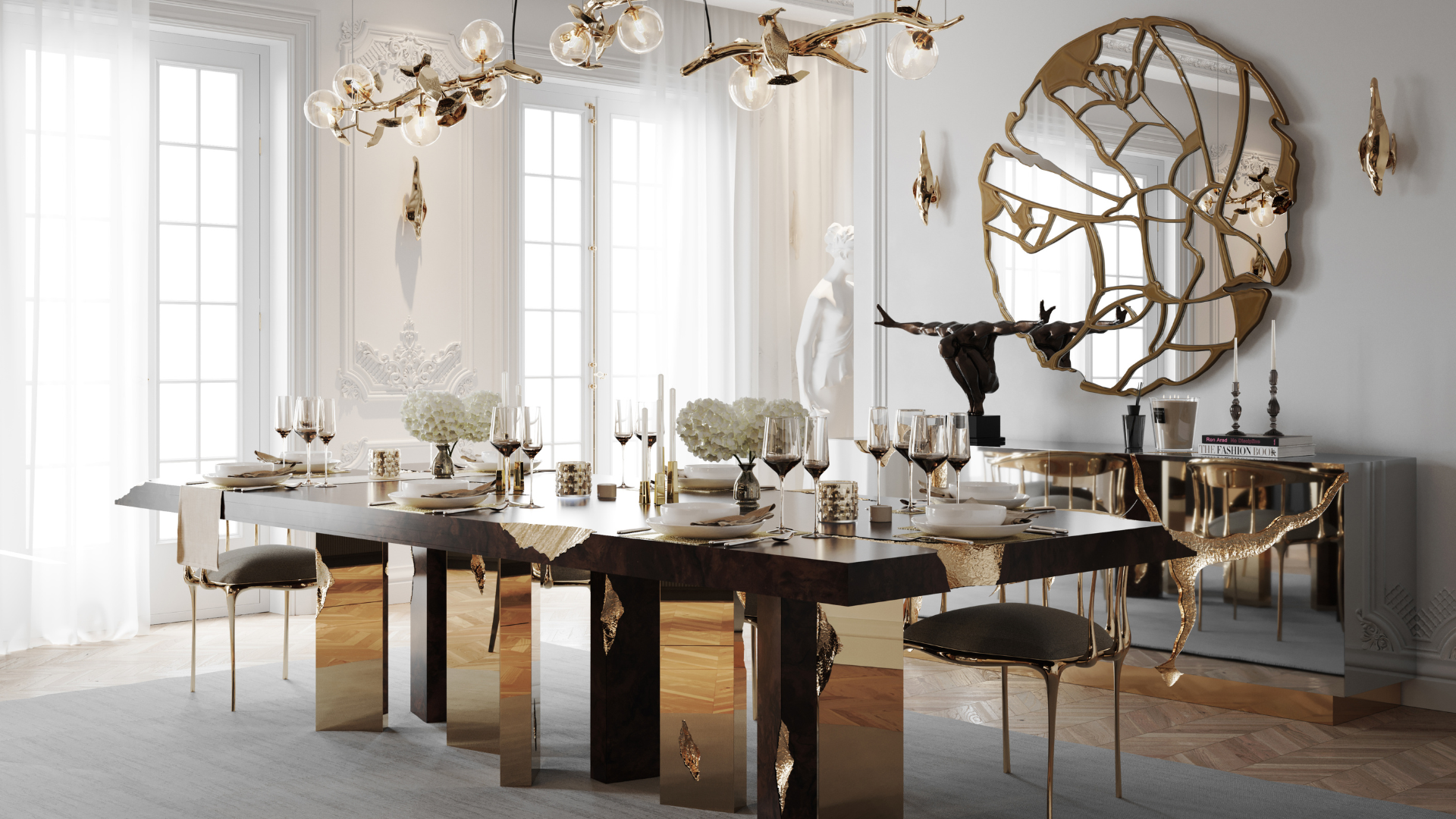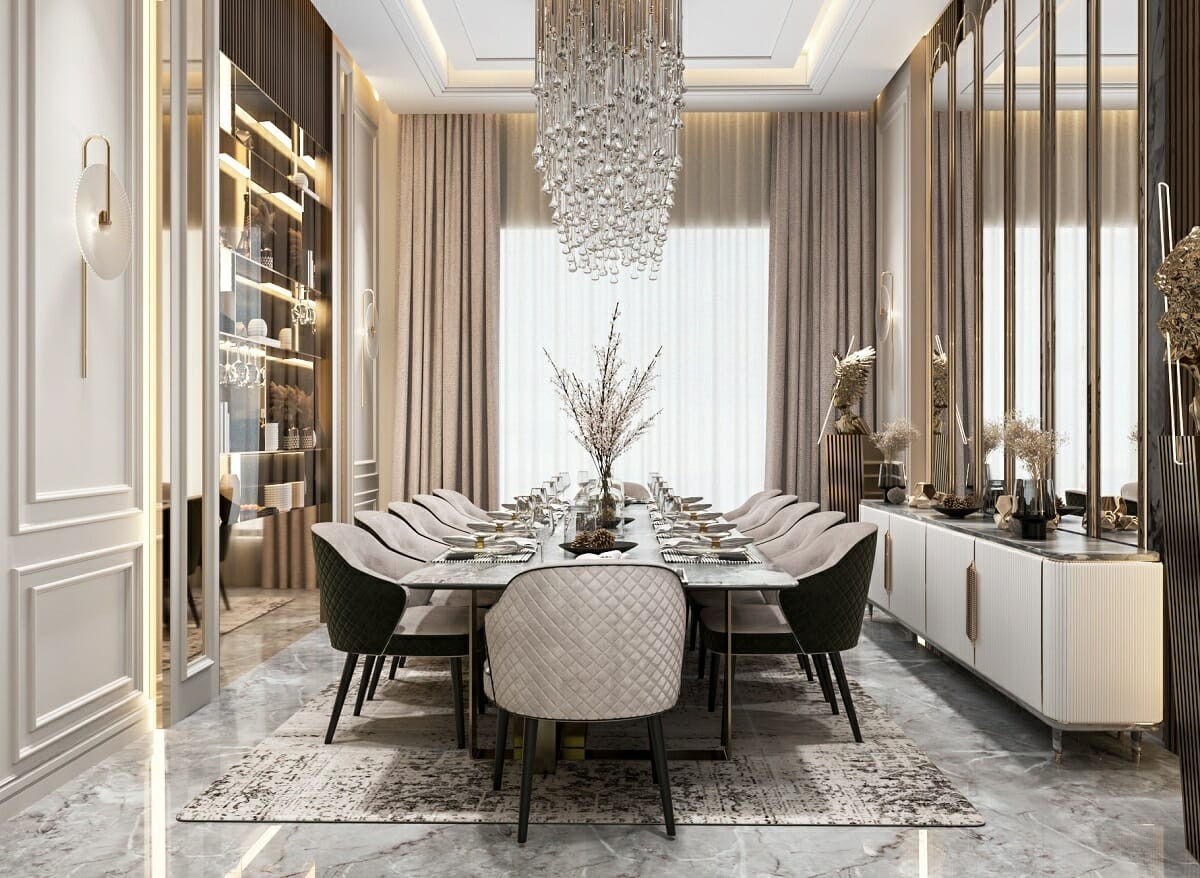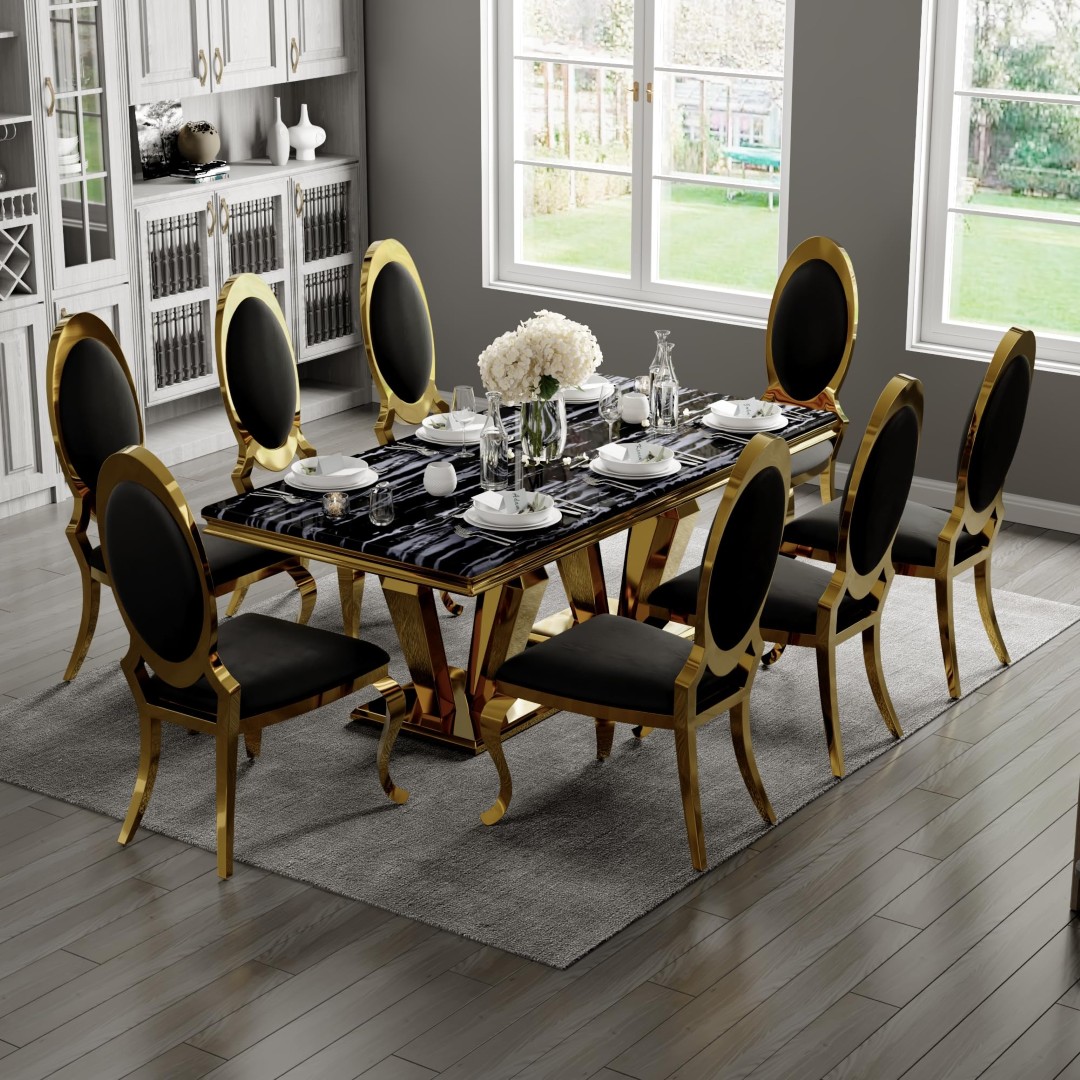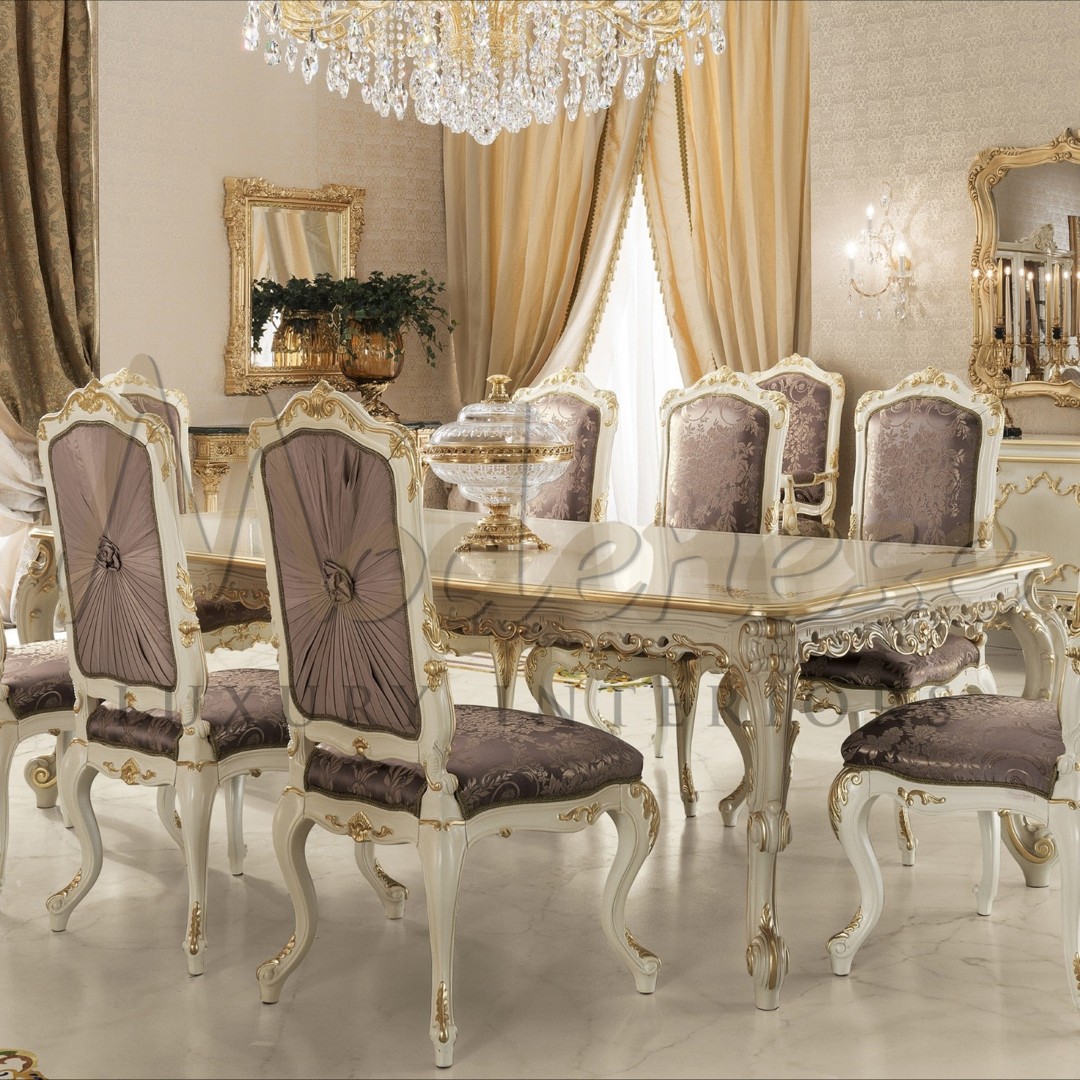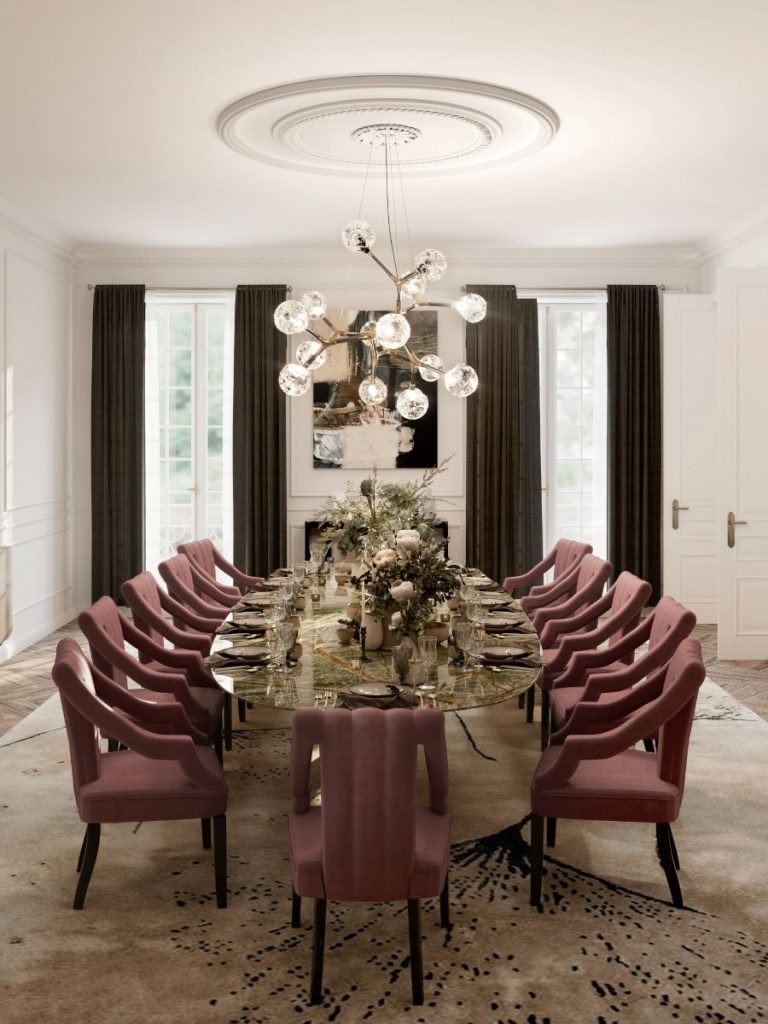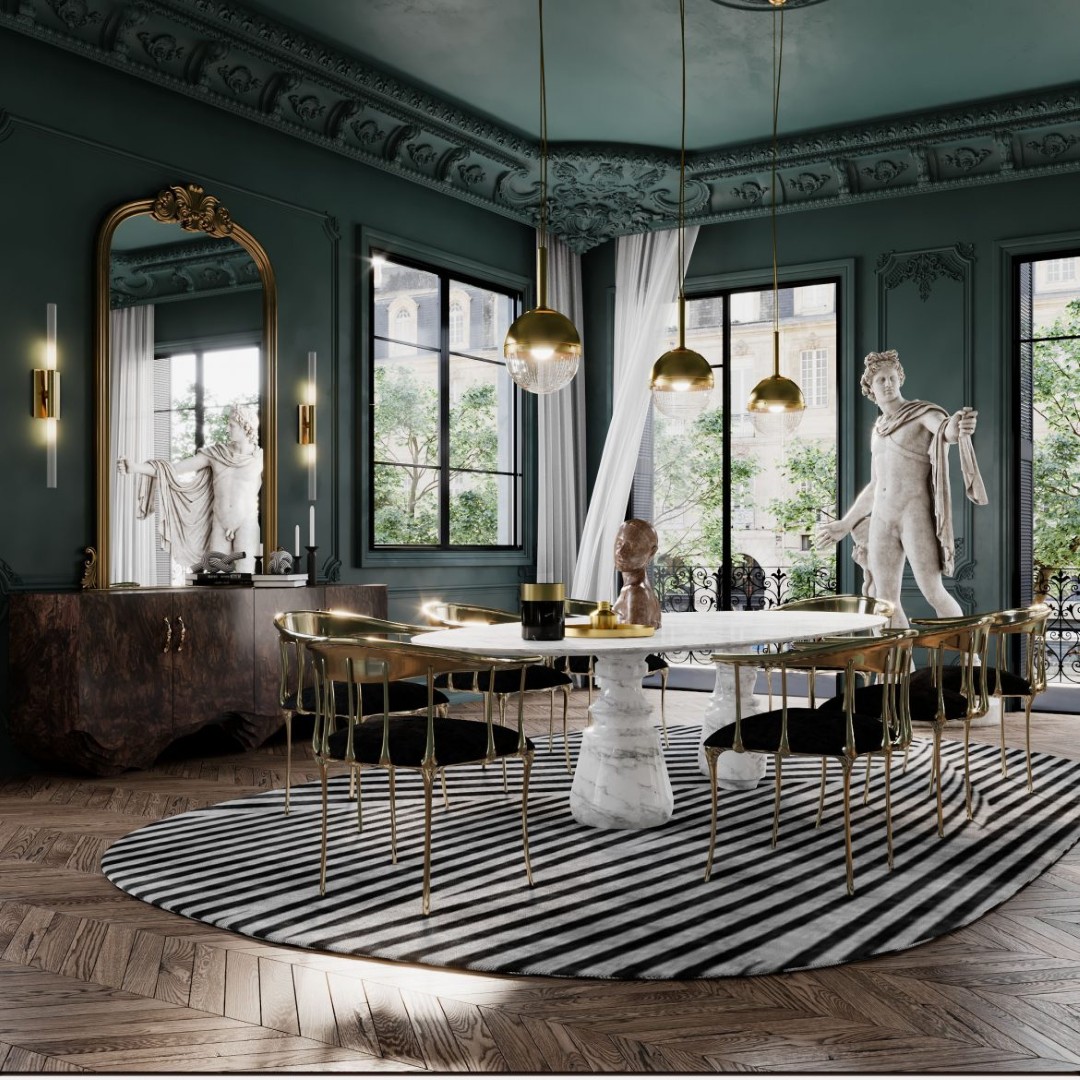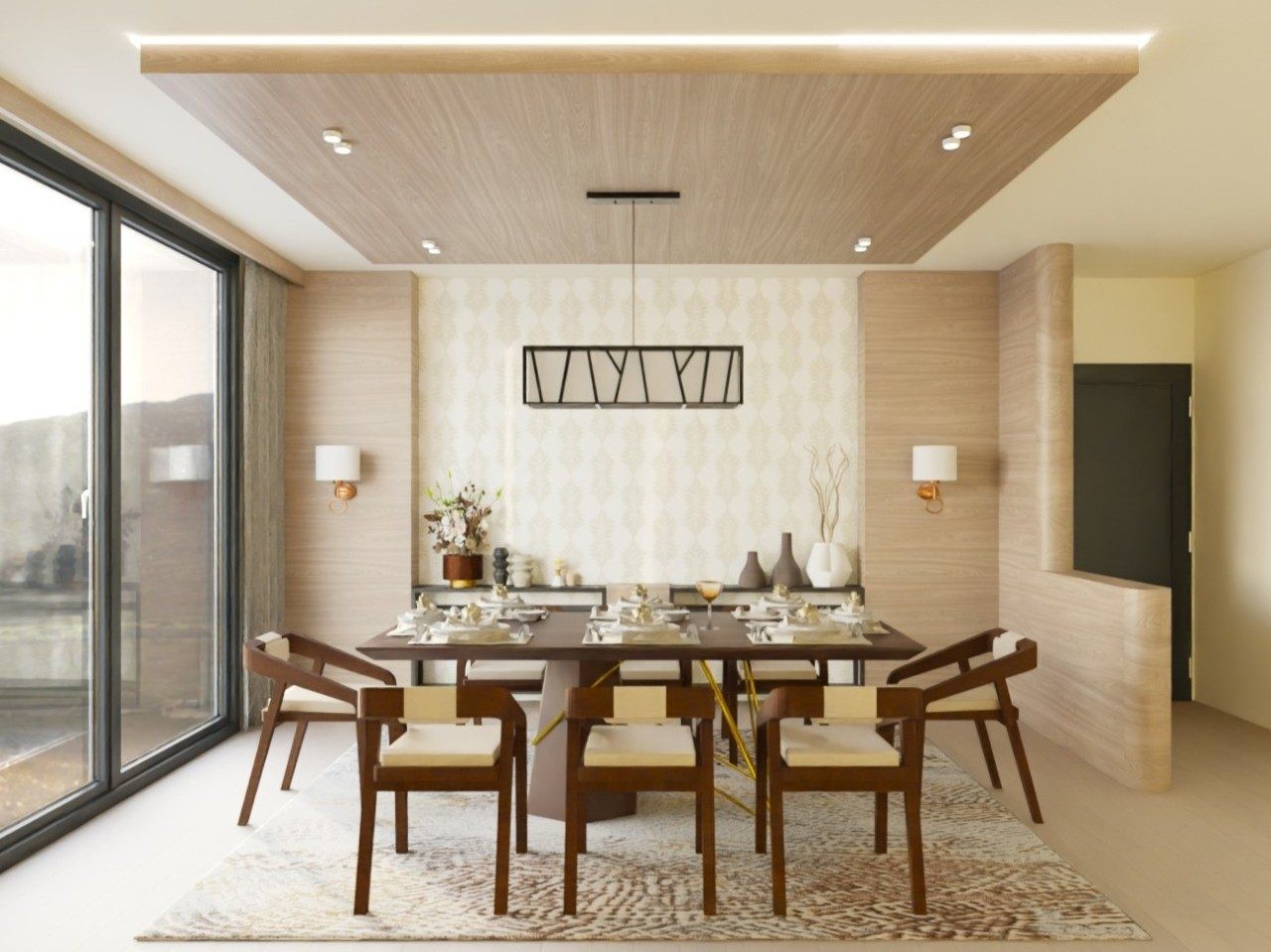Professional and Luxurious Decor for a Dining Room Table: The Ultimate Guide to Elevated Design
The modern dining space is more than just functional—it’s a critical stage for entertaining, negotiation, and personal expression. For the discerning professional, mastering the decor for a dining room table is non-negotiable, acting as the centerpiece of the home’s hospitality design. It’s the place where deals are informally sealed and where your personal taste is put on public display.
This guide moves beyond simple centerpieces to detail the architectural, textural, and aesthetic elements that define a truly luxurious and timeless dining experience. We explore how to curate every detail to ensure your decor for a dining room table is always impactful and trend-resistant, transforming your meals into moments of refined elegance.
The Foundations of Expert Decor for a Dining Room Table
Before adding a single accessory, the true foundation of professional table design lies in the permanence of the piece itself: the table, its materials, and the surrounding framework. The table isn’t just a surface; it’s the principal canvas that dictates every subsequent decor for a dining room table choice you make. Getting this architecture right is the difference between a functional space and a breathtaking statement room.
Architectural Materials Marble, Wood, and Glass in Dining Table Decor
The material of your table speaks volumes about your style, acting as the most significant piece of decor for a dining room table. Professionals should invest in materials that are both visually impressive and durable:
- Marble: Synonymous with timeless luxury. Focus on quality veining like Carrara or Calacatta, which offer a naturally grand and monochromatic centerpiece. A marble tabletop minimizes the need for heavy decor, as the stone itself serves as the art.
- Solid Wood: Look beyond standard oak. Walnut and Mahogany offer deep, rich stains that convey tradition and warmth. When paired with a sculptural or pedestal base, the wood table becomes a piece of furniture art. The natural grain provides texture, beautifully complementing softer decor for a dining room table like linen runners.
- Glass/Lucite: Transparency is a modern tool used to maintain an airy, open feel, particularly crucial in smaller or open-concept dining spaces. A clear tabletop allows the floor, the rug, or a dynamic base structure to become a visible part of the overall decor for a dining room table. This strategy is often employed by designers aiming for minimalism and light.
Shape and Scale How Table Geometry Defines Flow
The geometry of the table dictates the flow and formality of the room. Choose intentionally:
- Rectangular: Best suited for formal, linear place settings and hosting large groups. It provides the largest linear surface area, ideal for long, repetitive decor for a dining room table arrangements.
- Round: Encourages immediate conversation and intimacy. It naturally focuses attention inward, making it ideal for a dramatic, singular centerpiece focal point.
- Oval: A sophisticated blend of both, offering the softer edges of a round table but with the expanded seating capacity of a rectangular one.
Critically, the size must leave ample “breathing room”—the ability for guests to move around easily—otherwise, the final decor for a dining room table elements will feel visually cramped and uninviting. This careful planning is key to successful decor for a dining room table.
The Rug Foundation Underpinning Your Dining Table Decor
Often overlooked, the rug is the invisible base that anchors the entire room. A rug that is too small instantly cheapens the look. The professional standard requires a rug large enough to accommodate chairs even when they are pulled out—at least 2.5 to 3 feet beyond the edge of the table on all sides.
- Durability and Texture: Dining room rugs must be durable and easy to clean (low-pile wool or synthetic blends are favored).
- Aesthetic Complement: The pattern or color should ground the space and complement the table’s material without clashing with the decor placed on the table. A muted geometric pattern can add sophistication without fighting for attention against the exquisite decor for a dining room table pieces above it.
Curating the Statement Centerpiece Professional Decor for a Dining Room Table
The centerpiece is the most important component of the decor for a dining room table, serving as the primary visual anchor. The professional approach is to create centerpieces that are elevated, artistic, and facilitate conversation, actively avoiding common clichés like overly busy arrangements or generic floristry. The goal is “functional art.”
Low-Profile Elegance Centerpieces for Uninterrupted Conversation
The cardinal rule of high-end decor for a dining room table is the ‘conversational height’ rule: centerpieces should be under 12 inches or over 30 inches tall. Anything in between blocks eye contact and hinders conversation.
- Rhythmic Arrangement: For long rectangular tables, use multiple low vessels. A linear series of three or five small, artisanal ceramic bowls, or a sequence of varying-height candle holders, creates visual rhythm and sophisticated repetition without crowding.
- Styled Stacks: A curated stack of three expensive art books (in coordinating tones) topped with a small, unique sculptural object is a low-profile centerpiece that reflects intellect and taste, doubling as compelling decor for a dining room table.
Sculptural and Artistic Decor for a Dining Room Table
Move past generic store-bought items. True luxury decor for a dining room table involves using investment-worthy pieces that reflect the owner’s personal aesthetic.
- Investment Art: Consider a permanent centerpiece in the form of a small bronze or iron sculpture, an heirloom crystal bowl, or a substantial, asymmetrical art-glass vessel. These pieces are often unique and tell a story.
- Found Objects: An arrangement of polished drift wood, smooth river stones, or a collection of vintage magnifying glasses under a cloche can be unexpectedly sophisticated, proving that the most compelling decor for a dining room table is often the most personal. This truly elevates your decor for a dining room table.
The Role of Botanicals Elevated Floral and Greenery Decor
Florals should be architectural and intentional, not simply “flowers shoved in a vase.”
- Minimalist Grandeur: Opt for a single, large-scale plant like an Orchid or a vase filled with a few minimal, tall Pussy Willow or Foraged Branches. The focus is on line and shape, not color.
- Year-Round Luxury: For low-maintenance, high-impact decor for a dining room table, invest in high-quality faux greenery or preserved moss arrangements. This maintains a fresh look without the constant upkeep or expense of fresh flowers, ensuring the decor is always pristine.
- Repetition: A successful trick is to use repetitive small pots of succulents or ferns down the length of the table, creating a miniature indoor landscape as part of the decor for a dining room table.
Candlelight Strategy Creating Ambient Decor for a Dining Room Table
Lighting is atmosphere, and candlelight is the essence of professional dining ambiance. The strategic use of candles is crucial for intimate and sophisticated decor for a dining room table.
- Varying Heights: Use a mixture of sleek, tall tapered candles in metallic holders for formality and low, thick pillar candles placed inside glass hurricanes for safety and textural interest.
- Quality is Key: Always use unscented, high-quality, long-burning wax. Scented candles can interfere with the taste and enjoyment of food. The light source itself, not a perfume, is the desired decor effect.
Fine Tuning the Texture and Color in Decor for a Dining Room Table
The mark of a sophisticated interior is the mastery of layering. When it comes to decor for a dining room table, this means carefully selecting and combining linens, china, and glassware to build a rich, tactile experience that reflects a professional level of taste and attention to detail.
Linen Selection The Foundation of Table Decor for a Dining Room Table
Linens are the clothing of the table—they determine the formality and texture.
- Fabric Luxury: Prioritize fabrics like raw linen (for texture and a relaxed, European feel), polished cotton (for crisp formality), and even silk (for high-gloss evening events).
- Layering: Layering is key. Start with a runner, then add placemats, and finally top with impeccably folded napkins. A linen runner should drop elegantly at the ends of the table.
- Condition: High-end decor for a dining room table requires professional-grade, crisp, and perfectly pressed fabrics. Wrinkled or stained linens are a major decor failure.
The Art of the Curated Place Setting Layering China and Chargers
The place setting itself is a complex piece of individual decor for a dining room table art.
- Mix and Match: Move away from monolithic sets. Pair traditional formal china (perhaps a family heirloom) with sleek, contemporary charger plates made of metallic, lacquer, or rattan finishes. The contrast creates visual interest.
- Small Details: Use elegant place cards (even for small gatherings) and select unique, beautiful napkin rings. The napkin ring is the table’s “jewelry,” adding a small, focused point of metallic or textural brilliance.
- Spacing: Ensure meticulous, symmetrical spacing between settings. Perfect symmetry is a hallmark of professional, high-end decor for a dining room table.
Glassware and Cutlery A Professional’s Investment in Decor
These items are functional, but they are also essential elements of dining decor that reflect investment and care.
- Investment Glass: Opt for investment-grade pieces: thin-walled, high-quality glass or true crystal. The shape of the stemware (e.g., modern stemless vs. traditional tall stems) drastically impacts the table’s overall look.
- Contemporary Cutlery: While sterling silver is traditional, modern luxury often favors sleek, contemporary finishes like matte black, brushed gold, or deep bronze cutlery. These pieces provide a sophisticated contrast to white china and become part of the table’s sculptural decor for a dining room table.
- Condition: All cutlery and glassware must be gleaming and free of water spots—a small detail that speaks volumes about the level of hospitality. For a truly curated look, focus on every detail of the decor for a dining room table.
Seasonal Adjustments and Color Palettes
A luxurious space never looks tired. Professionals maintain this standard by rotating accessories.
- The 80/20 Rule: Maintain an 80% core neutral palette (whites, creams, earth tones) and use the remaining 20% for seasonal rotation. For example, introduce deep jewel tones (emerald, sapphire) in the textiles for winter and swap them out for muted naturals (sand, sky blue) in the summer.
- Intentional Change: The change must feel intentional and maintain the luxury standard. Instead of swapping out the entire centerpiece, simply change the color of the taper candles and the style of the napkin—subtle shifts that refresh the decor for a dining room table.
Integrating Overhead Lighting and Architectural Elements with Your Decor for a Dining Room Table
The true luxury of a dining room is holistic; it goes beyond the table surface. The surrounding architectural elements and the quality of the light are vital components that elevate the perceived value and sophistication of the decor for a dining room table.
Chandelier and Pendant Selection The Defining Focal Point
The overhead fixture is the suspended centerpiece—often the second most crucial piece of decor for a dining room table.
- Sizing Rules: The fixture must be correctly sized. A simple rule is that the diameter should be one-half to two-thirds the width of the table. It must be hung at the correct height: 30-36 inches above the tabletop to avoid glare and maximize its dramatic effect.
- Style Statement: Contrast styles intentionally: a grand crystal chandelier for a traditional setting, or an oversized linear pendant with a metallic finish for a bold, modern design. Clustering multiple identical fixtures is a contemporary technique used to create diffuse, artistic lighting. This decision impacts all subsequent choices.
Buffet and Credenza Decor A Supportive Backdrop to the Dining Table
The buffet or credenza serves as a supportive staging area that enhances the main table’s aesthetic without drawing focus away from the decor for a dining room table.
- Symmetrical Balance: Use the buffet to establish visual balance. A pair of substantial, symmetrical table lamps (with warm, shaded light) on either end of the credenza, flanking a large piece of curated art or a minimalist mirror, works perfectly.
- Functional Display: Use it for a rotating, high-end display of bar essentials: crystal decanters, luxury ice buckets, or an antique silver tray. This space effectively extends the overall room decor for a dining room table.
The Psychology of Placement Feng Shui and Flow
A professional interior design space is also about practical flow and energy.
- Natural Light: Position the table to benefit from natural light during the day. This enhances the colors and textures of the decor for a dining room table.
- Amplification: Use large mirrors on adjacent walls not just for decoration, but to visually amplify the space and, crucially, to reflect the beautiful table decor, creating the illusion of double the luxury.
- Flow: Ensure a clear, easy path around the table. Cramped dining spaces negate even the most expensive decor for a dining room table.
Maintenance and Storage A Professional’s Approach to Timeless Decor
Investment-grade decor for a dining room table requires investment-grade care.
- Pristine Storage: Store expensive linens with acid-free tissue paper to prevent yellowing and creasing. Store silver in tarnish-proof bags.
- Rotation Schedule: Maintain a visual rotation schedule. By simply swapping a bronze sculpture for a large ceramic bowl every six weeks, the decor for a dining room table feels fresh and curated without the cost of constantly buying new items.
- Durability and Longevity: When buying pieces, prioritize high quality that can withstand regular use, ensuring the investment in your decor for a dining room table lasts. Hospitality Design Authority often shows how durable materials are central to high-traffic, luxury spaces.
The conclusion we need to consider
Mastering the decor for a dining room table is about achieving a precise balance: creating a space that is as functional for a casual weeknight meal as it is breathtaking for a formal event. It is the practice of blending functional objects with sculptural beauty, meticulously layering textiles, light, and and art to create an experience that is memorable, functional, and deeply personalized. Successfully curating the decor for a dining room table makes the space a true reflection of professional refinement. Investing in your decor for a dining room table is not merely decorating; it is an investment in your lifestyle and your home’s enduring aesthetic currency.


